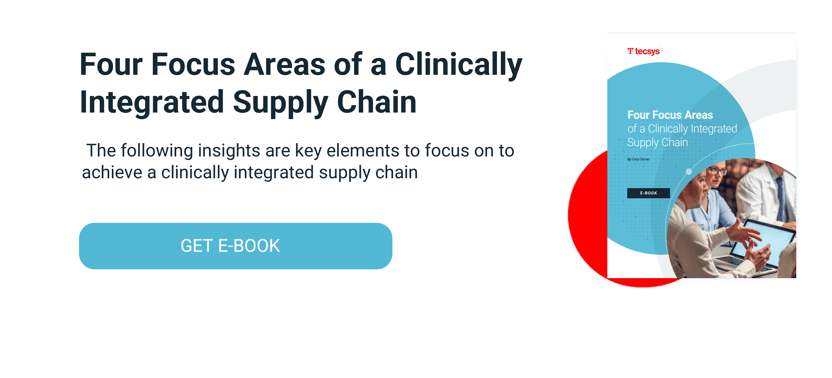Healthcare Supply Chain: From Basement Dweller to Fortune Teller

“The healthcare supply chain needs a rebrand. We’re pretty cool and the world needs to see that,” urges Tecsys’ Carrie Gorman just before pressing record for our podcast. And indeed, supply chain is earning some street cred as pandemic-fueled disruptions reveal stress fractures in among the most robust operations in the world.
See, the healthcare supply chain used to be this off-to-the-side siloed operation, generally a one-dimensional cost center that didn’t really factor into executive strategy — you may remember going into a health system and always looking for supply chain in the basement. But as the supply chain has evolved into a strategic asset for most health systems, things started to change and that concept of basement-dwelling supply chain operations is turning into a relic.
Today, we’re seeing doctors being asked to standardize; clinicians engaged in design; purchasing involved in data-driven and strategic decisions. CFOs are taking notice. But not all healthcare supply chains are working this way. To decode some of this, we welcomed Carrie on The Great Supply Chain Podcast.
Carrie works with health systems to redesign supply chains that not only work operationally, but are keyed into the factors like data, finance, outcomes and continuum of care. As a healthcare account executive at Tecsys, Carrie focuses on how to wrestle with a healthy blend of legacy and modern systems, and how to eke out true inventory visibility.
Among other things, we discuss the fundamental importance of collaboration:
“Never underestimate conversations between supply chain and clinicians so that your supply chain can understand the good, the bad and the ugly of the clinical staff experience. And from those conversations, you can start to see patterns and pull themes out of these discussions that can help you understand each other’s perspectives, but also see you know how you can work better together to get the results and collaborative environment that you’re looking for.”
And how that collaboration can be the nucleus for win/win continuous improvement:
“In a previous life, I had worked with the interim director of supply chain at a health system. Her first order of business was to go in to clean up and improve their processes; within her first six months there, she had received a standing ovation from the nursing staff when she walked into a meeting. See, she tracked nurses’ hours every week spent putting pulled inventory back on the shelves and concluded that it took about 12 hours per area, the equivalent of a full-time FTE per area. To solve for that, she incorporated a mobile case cart in every patient’s room that had just the basic general supplies; about 20 or 25 supplies. While it was a relatively straightforward resolution, she was only able to arrive at it by talking to the clinicians, learning where their pain points were and watching their behavior. This allowed her to see where the gaps existed and devise a workflow that helped serve the customer better.”
Ok, so maybe we’re a ways away from fortune telling … but as Carrie explains in this podcast, visibility, collaboration and supply chain design are powerful tools for a future-focused operation.
Join us for Carrie’s conversation on this episode of The Great Supply Chain Podcast as we explore how to effect change in the healthcare supply chain environment through positive collaboration and simple tips and tricks to engender a modern mindset across departmental divides.
4 Key Takeaways
1. Lifelong Learner
Supply chain leaders should invest in themselves by continuously seeking out ways to discuss with peers, attend educational events and challenge their own presumptions of best practice.
2. Cross-Departmental Collaboration
Aligning your goals and vision across the organization and establishing mutual respect and understanding for one another’s roles are critical to effective prioritization and decision-making.
3. Data is King
Effective administration of data is not a natural or obvious task for most healthcare organizations, but aligning and harnessing data across departments is a rich source of success for stakeholders, whether they are measuring that success through an operational, clinical or financial lens.
4. Process is Queen
While ‘data is king’, the quality of that data is only as good as the processes that underlie that data; in order to gain confidence in data, it is crucial to tap into technology-supported processes that ensure the story that data tells is a reflection of the true state.



